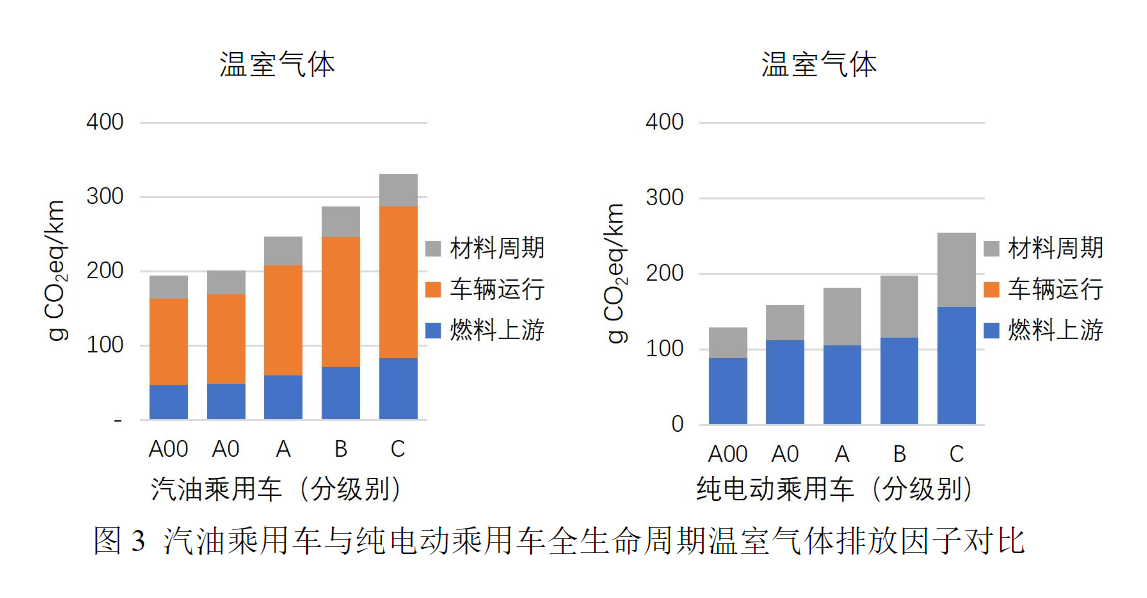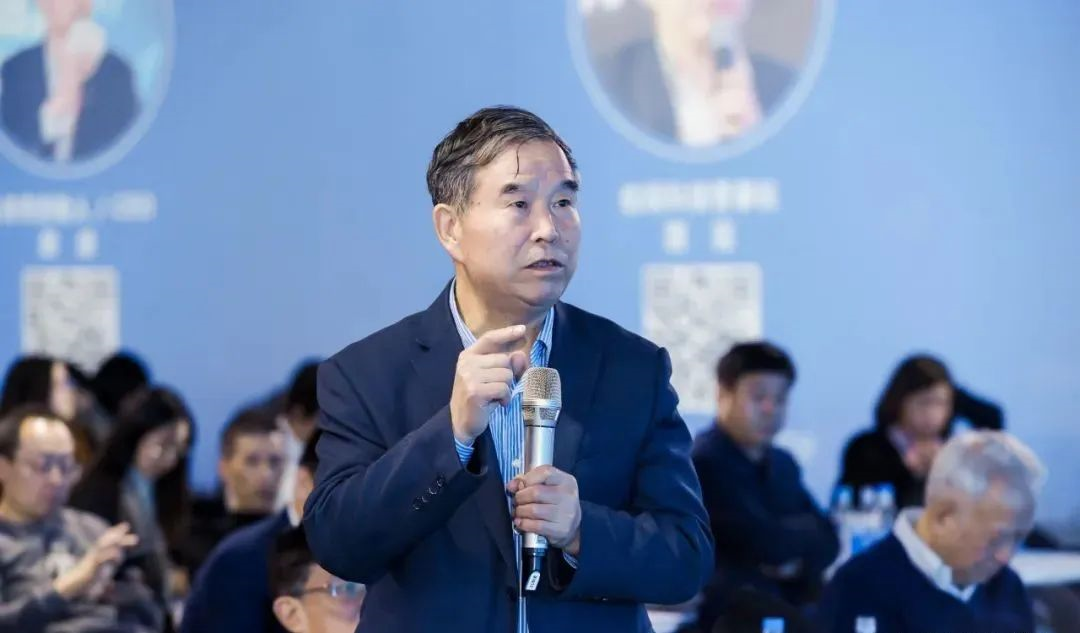Author | Lian Lian
Editor | Lingfang Wang
“In my opinion, the electrification of automobiles is still an incomplete project. It has not been fully developed.” Despite being retired, Chen Quanshi still pays attention to the development of China’s new energy automobile industry.
He officially started researching electric vehicles in 1991, and has been working in this field for 31 years. He studied automotive engineering at Tsinghua University in 1964, graduated and stayed on as a teacher, serving as a professor, doctoral supervisor, and also as department head of automotive engineering and deputy director of national key laboratory of automobile safety and energy conservation at Tsinghua University.
On October 17th, Electric Vehicle Observer interviewed Professor Chen Quanshi. He raised three questions and suggestions on the current development situation of new energy vehicles.
Chen Quanshi believes that the foundation of China’s automotive electrification technology has not been fully established yet. Therefore, the focus should still be on the research and solutions of basic problems instead of being overly focused on performance or hastily pushing for the application of autonomous driving technology. Hydrogen fuel cell vehicles should not be commercialized too soon either.
Autonomous driving should not be radical
“Autonomous driving can only be experimented, researched, and demonstrated at present. Don’t rush to industrialize it.” Our topic with Chen Quanshi, therefore, started with autonomous driving.
“For car models that claim to have autonomous or advanced intelligent driving, these vehicles come with many intelligent software and hardware, and the cost is significantly increased. However, do you think everyone will use them? If not used properly, accidents could occur!”
Chen Quanshi said that the intelligent driving approved by the state currently only includes level L2 auxiliary driving. No matter how good the factory says it is, the driver still remains responsible in case of any problems.
As for more advanced intelligent driving assistance, how to assign responsibility in case of accidents is still under research and there are no national standards or regulations. Therefore, it is a responsible approach to limit it to experimentation, verification, and demonstration purposes.
In addition to safety concerns, Chen Quanshi also believed that it raised costs and affected the acceptance of electric vehicles.
In the past two years, due to the economic downturn caused by the COVID-19 pandemic, consumers’ purchasing power is actually limited. Consumers find it difficult to bear excessively intelligent product configurations. He predicts that sales of this brand and product may decline at the end of this year and next year. In contrast, BYD is more pragmatic in the field of intelligence, but it does well in electrification and also lowers costs. “BYD sells cars very well, and the market has already made a choice.”
He emphasized that for now, the basic function of an electric vehicle is still transportation, not an intelligent terminal. “If autonomous driving and unmanned driving are realized, the car becomes an intelligent terminal. But as long as people still have to drive the car, emphasizing the concept of an intelligent terminal can be misleading.”
Chen Quanshi believes that autonomous driving should not be excessively promoted for another reason-“I think electrification is still a half-baked engineering project and has not been fully completed.” At this stage, it should not be rushed to end the “first half” of electrification and move towards the so-called “second half” of intelligence.
Electrification is still “half-baked”
Why is electrification still only a “half-baked engineering project”?
Chen Quanshi believes that efforts should continue in three areas: first, the safety issues of batteries have not been completely resolved; second, the integration of power systems; and third, the form of energy supplementation, charging? Replacement? Or a combination of both?
In the situation where these three basic problems still need to be worked on, the industry is keen on pursuing high performance. Chen Quanshi raised some critical opinions.As an expert in electric vehicles with years of research, Chen Quanshi admits that there is a problem with the discrepancy between the nominal range (data obtained under laboratory conditions according to national standards) and the actual range of electric vehicles. Compared to the nominal range, “the actual range in spring and autumn is about 85%; when using the air conditioner in summer, I estimate it will be reduced by 25%; in winter, using the heating and the performance of the power battery will be affected by low temperature, it may decrease by 30% or even more.”
However, Chen Quanshi opposes blindly pursuing long range. “The range should not be too absolute. It is sufficient to make a practical range of 400 kilometers or 300 kilometers”. Especially for many car companies that propose to achieve a range of 1000 kilometers, he considers it “troublesome”. Firstly, he believes that 1000 kilometers is not necessary. The typical range for refueling a gasoline vehicle is around 500 kilometers. “You have to rest after driving for 500 kilometers.” Secondly, making ultra-long range electric vehicles is not economical and cannot reduce carbon emissions.
“Chen Quanshi said that because the power battery itself is very heavy, increasing the range by 100 kilometers requires more than 10 degrees of electricity, which increases more than 100 kilograms. In addition, the marginal efficiency is diminishing – the more the range is increased, the more batteries are needed, because they become increasingly heavier.”
In addition, pursuing ultra-long range may not achieve the original intention of reducing emissions of pure electric vehicles. According to the “Automobile Life Cycle Greenhouse Gas and Atmospheric Polluting Emissions Assessment Report 2019” prepared by China Automotive Engineering Society, this report compares the overall life cycle emissions of fuel vehicles and pure electric vehicles, covering all aspects of the use, energy production (i.e. power generation) and vehicle manufacturing, and evaluates the WTW (well to wheel) full cycle.
The results show that the fleet average greenhouse gas emission factor of pure electric passenger cars can be reduced by about 50% compared with gasoline passenger cars.
However, the total emissions increase overall as the vehicle level increases. Taking the pure electric passenger vehicles under the national average electricity level as an example, the greenhouse gas emission factors of the A00 to C-class vehicles in their full lifecycle are 129, 159, 182, 198, and 254gCO2eq/km respectively. A major reason is that smaller vehicles are more economical, with lower energy consumption per 100 kilometers than medium and large vehicles. In addition, at the manufacturing end, smaller vehicles have lighter weights, use less body materials, and require smaller power battery capacities, resulting in lower energy consumption and emissions related to body materials, battery production, and assembly.
Therefore, the report calls for the industry to continue to promote the development of smaller vehicles, and at the same time, all levels of new energy vehicles must control energy consumption to avoid wasting resources and increasing energy consumption and emissions due to blind pursuit of range.
Of course, Chen Quanshi also sees the shortcomings in convenience for refueling with vehicles that have the same range level, whether it be fuel vehicles or electric vehicles. However, “considering the economic aspect, it is not ideal to recharge once a week. It would be better if we could recharge every day or every other day, so that everyone is satisfied.”
To achieve this, charging should be more affordable and compensated for consumers. On the other hand, the construction of charging facilities should be vigorously promoted, and slow charging should be widely installed, allowing everyone to charge in parking spaces, especially those who can enjoy the preferential nighttime valley electricity price. As for fast charging, he believes that it should be applied only under emergency conditions. There is no need to rush into 800V ultra-fast charging. As for high-speed travel, it is normal to take a break for 20 minutes or half an hour, so there is no need to pursue how many kilometers can be charged in 5 minutes.
Regarding the phenomenon of long queues at high-speed charging stations during holidays, Chen Quanshi stated that this is only the case for a few days, and it is not commonly used. The benefit of the charging station is not good.When it comes to safety, ultra-fast charging can cause a quick increase in battery temperature, which may bring safety risks and shorten battery life.
Chen Quanshi believes that there is no need for passenger cars to pursue high power motors. Over 100 kilowatts of power is enough for daily use. “For front and rear drive systems with 400 kilowatts, most of it is useless. One set of motors is enough to save a set of drive systems, which can reduce costs.”
When it comes to electric cars, China’s national conditions must be considered. High-performance vehicles have a small market, and economy cars are more suitable for the general public.
The time for hydrogen fuel cell vehicles to become popular has not yet arrived
“In 2005, I published a book called ‘Fuel Cell Electric Vehicles’, and I won a third prize for progress in automotive industry technology.”

When it comes to fuel cell vehicles, Chen Quanshi first expressed his own research experience. “The first fuel cell golf cart in China was made by our team. It came out at the end of 1998, and I know about it.”
“We seem to only talk about hydrogen energy as high technology everywhere now, and some people say that hydrogen energy is the ultimate solution. I said there is no ultimate solution, only one of the solutions.” Chen Quanshi said that industrializing fuel cell vehicles is difficult.
He believes that four “2s” are necessary prerequisites for the industrialization of fuel cell vehicles.
“First, fuel cells can run according to the working conditions of automobiles, and their service life can reach 20,000 hours. Second, the cost of the fuel cell system should be reduced to 2,000 yuan per kilowatt. Third, the price of 1 kilogram of hydrogen should be 20 yuan. Fourth, it should be able to start normally at -20 degrees Celsius.”
These “4 2s” may seem easy, but they are actually very difficult.Using working lifespan as an example, Chen Quanshi stated that many companies claim to achieve 20,000 hours of operation in the laboratory, which is far from the actual working conditions.
He gave an example, “In 2008, we were responsible for maintaining the hydrogen fuel cell vehicles demonstrated in the Olympic Games. The performance indicators dropped rapidly in winter. Why?”
It was not until we collaborated with experts from Ballard Power Systems, the fuel cell system supplier in Canada, that we found the answer. At that time, the operating routes of hydrogen fuel cell vehicles were close to the suburbs where many people used coal for heating, emitting large amounts of sulfur dioxide. As a result, the power stack of these hydrogen fuel cell vehicles was “poisoned by sulfur dioxide.”
The price of hydrogen is also still very high. “One kilogram costs 20 yuan, which is not produced by your hydrogen plant, but calculated at the refueling station,” Chen Quanshi said. “If you produce hydrogen from coal or natural gas, it costs only a few or a dozen yuan. However, hydrogen needs to be stored, compressed, transported to the place of use, and pressurized during refueling. The cost of this process is probably more expensive than the production cost.”
Transportation is not just a cost issue. Chen Quanshi introduced that there is currently no large-scale safe and stable transportation method.
“Renewable energy is mainly concentrated in the western and northern regions, but the places of consumption are mainly in the eastern and southern regions. After producing hydrogen from renewable energy, how to transport it over long distances?” He explained, “The pipeline transportation of hydrogen researched by the industry and academia, the transformation into methanol transportation and reformation of hydrogen, the transformation into ammonia solution transportation and reformation of hydrogen, etc. All of these methods have relatively high overall costs.”
Regarding the application of hydrogen fuel cell vehicles, huge financial investment is also needed. It is necessary to provide subsidies for high-cost vehicle prices and to construct hydrogen refueling stations while searching for hydrogen sources. From the application in some places, even giving hydrogen fuel cell buses to public transportation companies for free is not practical because they cannot afford to maintain them.
Chen Quanshi believes that commercial hydrogen fuel cell vehicles can demonstrate operations in regions with hydrogen sources and strong local finances. However, the difficulty of applying hydrogen fuel cell passenger cars is even greater.Chen Quanshi introduced that first of all, the fuel cell system used in passenger cars must be pressurized, and the air compressor must be small in size and light in weight. Therefore, the speed must be very high, and the bearings must all use air bearings. Only a few companies in the world can produce such parts. Some domestic companies can also do it, but because the demand is small and the requirements are high, the cost is relatively high.
Secondly, the hydrogen tank on the passenger car must be 70 megapascals, otherwise it cannot travel three to four hundred kilometers. For a 70 megapascals hydrogen tank, the actual pressure should be able to reach more than 90 megapascals. The development cost is expensive and the country has not yet applied standards.
Thirdly, there is the issue of service. Passenger cars run around randomly, unlike commercial vehicles that have fixed routes and can build hydrogen refueling stations near the routes. If they want to meet the hydrogen refueling needs of private passenger cars, the investment in building refueling stations is too high.
In short, he believes that car companies should develop key technologies for hydrogen fuel cell vehicles, but should not rush to push it into the industrialization stage.
The achievements of China’s new energy vehicles are obvious to all. As one of the earliest participants, Chen Quanshi is also very proud.
However, in the current development stage, Chen Quanshi still insists that the industry should continue to work hard and focus on the basic issues of electrification. “The first stage of electric vehicles was a extensive development pursuing quantity. Now we need to pursue quality. To truly gain market recognition, we need to make it convenient, economical, reduce emissions, and save power in terms of infrastructure, in addition to solving the capabilities of the transportation tools themselves.”
This article is a translation by ChatGPT of a Chinese report from 42HOW. If you have any questions about it, please email bd@42how.com.
